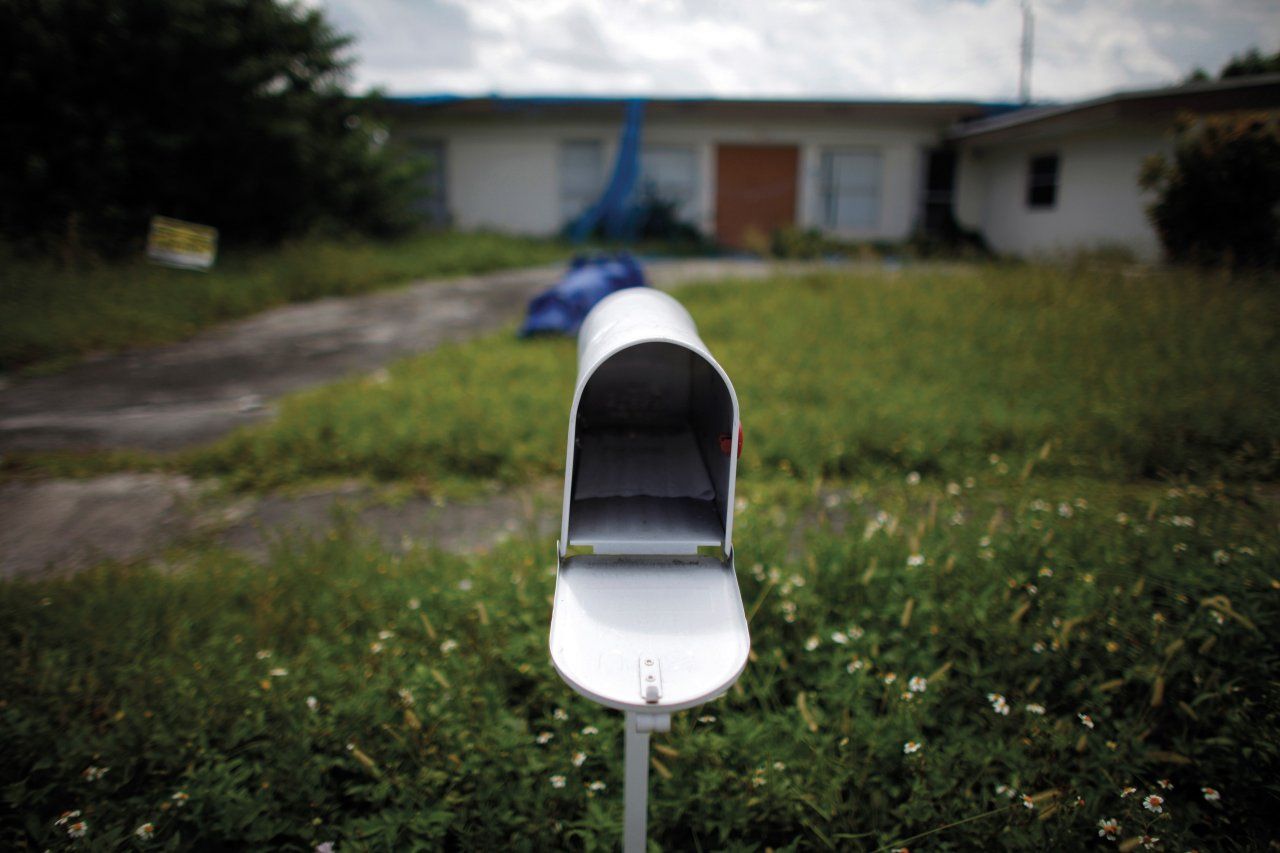
The Great Recession began in the fourth quarter of 2007. Measured in Depression clock time, 2012 was 1934, when the U.S. economy expanded 7.7 percent. Today such expansion seems remote. Rather, the economy is still stuck in a low-growth rut, the second such severe downturn in the United States since 1929.
We suffer from a balance-sheet crisis, the consequence of a collapse of property values plunging many households—now 21.5 percent—into negative equity. These households owe more on their mortgages than their houses are worth; even more households hover near the edge of that black hole. Equally serious for the resumption of economic growth is that the banks holding these mortgages were simultaneously plunged into negative equity.
Why were economic policymakers blindsided by these events? It's simple: balance-sheet effects are not included in policy thinking. When balance sheets are widely damaged, the normal flows of consumption and lending are disrupted, as households gradually pay down debt to climb back to positive net wealth and banks severely limit new mortgage lending.
There is strong evidence from the experience of economies as diverse as Japan, Sweden, and the U.S. that the least painful solution to balance-sheet crises is to allow defaults and bankruptcies to run their course, so that bloated debt obligations are realigned with realistic market-asset values. It is now 20 years since Japan suffered a real-estate collapse and—foreshadowing U.S. policy of protecting large banks from failure—became mired in anemic growth. The political process tends strongly to favor a policy of "too big to fail" for the banks. Why? Because it protects incumbent investors who are highly visible, contribute to election campaigns, and naturally do not want to lose their investments, however much based on an unsustainable housing-price bubble. Sweden suffered a balance-sheet crisis in the early 1990s, but mounted a swift, decisive response in which failing banks were required to recognize losses and recapitalize. Similarly, in the U.S. over 400 smaller banks failed, their mortgage assets sold at market worth, and were recapitalized. This process is salutary: it heals balance sheets, enabling capital to flow into new investments earning a return undiluted by the rescue of old investors that had failed but were not required to take their hit.
Fundamental insights have come from experimental economics that explain why some markets produce episodes of instability and economic suffering. My own first experiments were published 50 years ago, the results having surprised me as much as the economics profession. They demonstrated that markets governed by ordinary repetitive supply and demand converged quickly to prices and outcomes that maximized the gains from specialization and trade. But these markets had features distinct from the housing-mortgage markets so prominent in the Great Recession and Depression: the items were immediately paid for and consumed. Participants were always either buyers or sellers, and all sales were final, as items could not be retraded. So think about that: the items were like hamburgers, hotel rooms, haircuts, and things you buy at 7-Eleven. The experiments involved items exactly like the national-accounts category of "consumer nondurable goods and services," which account for about 75 percent of goods produced by the private sector. These markets are very large, very dependable, and not a source of recurrent instability for the economy. All our economic woes, when they occur, arise from the other 25 percent, especially houses, often bought with lots of what Adam Smith called "other people's money." Houses are durable, and depending upon the price, you might decide to be either a buyer or a seller.
Experiments in the 1980s focused on markets for assets that were durable: you might decide to buy more or to sell some of your holdings, depending on the price; in some experiments you could borrow to buy. All these markets diverged immensely from intrinsic asset value, even though all participants were fully informed and reminded each period about the fundamental worth of the assets traded! People in these experiments would get caught up in self-sustaining expectations of price changes—at first driving the price up, then down. Although these markets were "irrational," in that their deviation from equilibrium was not sustainable, they were myopically rational: in other words, given their trend-based behavior, it was rational to play along, but you had to be nimble and cash out before the crash.
Until the Great Recession I did not fully appreciate the important differences in these two kinds of experimental markets—the durable and the nondurable, or the house and the hamburger. What is now clear is that although markets work miracles in the latter case, they can be ugly and painfully unstable in the former.
In 1934 my parents lost their Kansas farm to the bank, and the bank could not resell it for mortgage value. Though these losses were hard felt at the time, it was far better to start over with a clean balance sheet than to drag that negative equity into the future. Today millions of Americans are in homes with modified loans and lower payments, facing years of paying off mortgages for houses purchased at unsustainably puffed-up prices. The too-big-to-fail banks were rescued by the taxpayer, but retained a great many overvalued assets and, in the absence of failure, were not required to mark mortgages to current market value. Consequently, investors are skeptical of these banks: the stocks of bailout champions like Bank of America and Citibank still sell for only 60 percent to 70 percent of book value, while Wells Fargo—needing no bailout—sells for 135 percent of book.
Economic policies that avoid default do not avoid loss for the economy. They simply stretch the loss into an uncertain future. When the Federal Reserve and Treasury buy overvalued mortgages from the banks, this action just kicks the negative-equity can from the private to the public sector—and the drag against future output continues.
Uncommon Knowledge
Newsweek is committed to challenging conventional wisdom and finding connections in the search for common ground.
Newsweek is committed to challenging conventional wisdom and finding connections in the search for common ground.
About the writer
To read how Newsweek uses AI as a newsroom tool, Click here.






